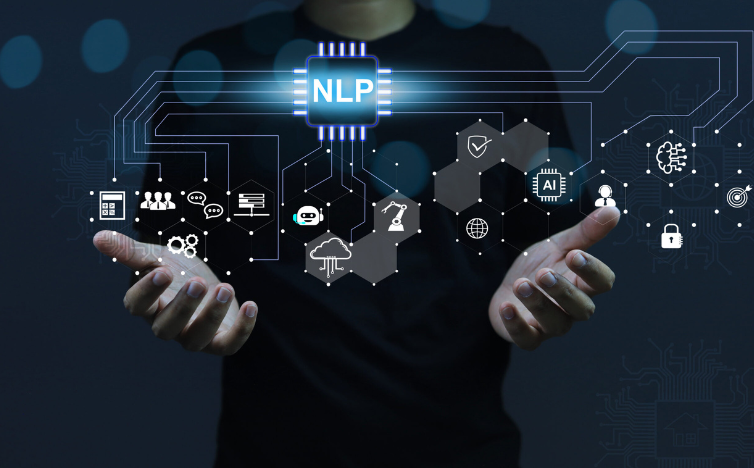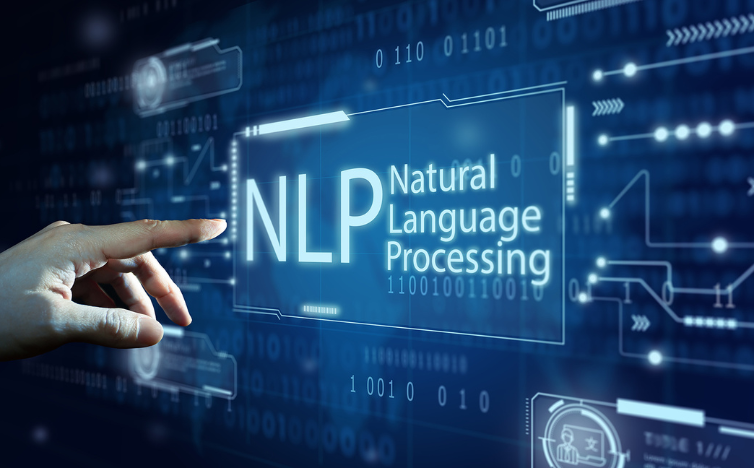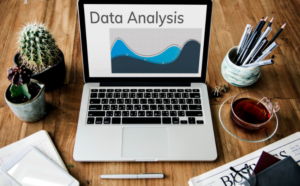When you explore social media analytics, it feels like entering a magical forest full of unorganized data. It’s vast and wild, but there are valuable insights waiting to be discovered. New tools and technologies constantly appear to help make sense of the user-generated content in this ever-changing landscape.
For people who manage social media, love technology, or work in digital marketing, figuring out how to process data can feel like battling a legendary dragon. But thanks to Natural Language Processing (NLP), this complicated task is becoming easier. NLP helps us understand social media users better by translating their language into something machines can understand, giving us valuable insights.
In this detailed blog post, we’ll explore the combination of social media data analytics and NLP. We’ll uncover how they work together and show how their magic can help us turn raw data into useful strategies. So get ready as we dive into the world of NLP and its role in social media analytics.
Table of Contents
The Conjuncture of NLP and Social Media

In the era of advanced AI, combining two different areas—NLP and social media—ushers in a new era of understanding, interacting with, and using social platforms. NLP helps machines understand human language, which is crucial in today’s world where social media is like the modern marketplace.
What is NLP, and Why Does it Matter in Social Media?
NLP, a branch of artificial intelligence, grants machines the ability to understand, interpret, and respond to human language. As social media becomes a major place for public discussions, NLP takes charge in examining large amounts of unorganized text, turning it into useful business insights.
Social Media Chatter: Making Sense When There Seems None
Social media platforms hold vast amounts of user conversations, ready for analysis and understanding. When NLP and social media come together, they transform this chatter into valuable insights. This includes understanding emotions, identifying topics, and recognizing customer intentions, and there’s much more to explore.
Peering Through the NLP Lens: Sentiment Analysis and Beyond
When you look through the NLP lens, it helps separate different types of content. One powerful ability of NLP is sentiment analysis, where machines can understand the mood and tone of user conversations.
The Mood Ring of Social Media
NLP algorithms act like digital ears, able to tell apart positive, negative, and neutral feelings in texts. This helps marketers understand how people perceive their brand better. Whether it’s checking reactions to a new product or handling a PR problem, this psychological tool is really important.
Beyond Sentiment: Understanding the Voice of the Group
Sentiment analysis is just the beginning. NLP goes further by uncovering language patterns, groups, and characteristics that make up user groups. This extension of NLP helps find influencers, understand slang, and keep track of changes in demographics.
Learn More: Future of AI in Social Media
The Decoding of Customer Intent
Navigating social media to understand what customers really want can be like going on an adventure. NLP acts as a guide in figuring out what customers intend, which is something all marketers are on a mission to discover.

Keywords to Context: Tracking the Path
Customer intent is subtle; it’s the difference between searching for “digital camera specs” and “buying a digital camera.” NLP excels at bridging the gap between explicit keyword use and the implicit intent, empowering brands with the knowledge to pivot their strategies accordingly.
Turning Insights into Action: The Conversion Magic
By turning raw data into useful insights, NLP shows the magic behind understanding intent. Now, brands can improve their products, make their messages better, and create personalized customer experiences, all thanks to NLP-powered social media analytics.
Navigating the Flood: Topic Modeling and Trend Tracking
On the open seas of social media, trends are the ever-shifting tides. Topic modeling, an NLP technique, helps chart these waters by grouping social media conversations into relevant subjects, allowing marketers to navigate the flood of content with clarity.
Surfing the Content Waves with Topic Models
Topic modeling algorithms sort through online content to uncover the main themes. Whether it’s hashtags or popular memes, NLP-based topic modeling identifies trending topics, providing a roadmap for content creators and social media managers.
The Art of Future-Gazing: Trend Prediction
With sufficient data points, NLP can do more than just track trends; it can predict them. Leveraging historical data and statistical methods, NLP helps businesses predict trends on social media, allowing them to stay ahead of the curve in the digital world.
Crafting the Digital Persona: Personalization at Scale
As the march for a personalized digital experience grows, NLP emerges as the armor for this quest. It allows brands to create tailored strategies that speak to individual users, resonating with their unique digital personas.
The Convergence of Personal and Digital Identities
NLP combines a user’s online activities with their personal story, helping brands connect with individuals rather than just targeting a broad audience. This blend improves relationships between brands and customers, making people feel acknowledged and understood.
The Symphony of Customization: Tailoring the Digital Journey
By studying patterns in content created by users, NLP can create personalized content, ads, and suggestions. This customization makes users happier and more likely to pay attention to a brand’s message.
Ethical Considerations and the NLP Social Contract

Using NLP for social media analytics is like having a double-edged sword. While it provides valuable insights, it also brings great responsibility. Marketers must be careful about the ethical issues that come with using these technologies.
Navigating the Moral Maze of Data Collection
As NLP systems require data to train on, the collection process must be transparent and ethically sound. Users need to be informed and their data handled with care to maintain trust, a key currency in the digital age.
Protecting the Sanctity of Individual Expression
NLP must respect how people express themselves uniquely. It’s important to preserve the cultural and language differences in social media conversations to avoid oversimplifying or distorting human communication.
The Road Ahead: Social Media Analytics with NLP v2.0
As AI progresses and NLP gets better, social media analytics gets more advanced. We can now understand the meaning of text, subtle conversational cues, and even deeper levels of what users want.
Embracing NLP with AI Socialbots: A New Dawn
AI socialbots, equipped with NLP magic, will soon be making genuine, interesting, and super-personalized content instantly. The future of social media marketing depends on conversational AI, making a virtual world that responds better to what users want.
AI-Driven Crisis Management and Real-Time Engagement
As NLP technologies become more adept at real-time analysis, the potential for crisis management and social media engagement skyrockets. AI can identify and flag potential crises, respond to customers at a moment’s notice, and even prevent issues before they escalate.
Learn More: AI Tools for Data Analysts
Conclusion
The blending of NLP and social media analytics is a strong message for marketers, urging them to adopt data-driven tools that can open up a better understanding of consumers. As we explore further into the captivating impact of NLP on social media, one thing becomes very clear: NLP’s strength isn’t just in analyzing data; it lies in the liveliness of discussions, the heartbeat of trends, and its ability to make social media analytics not just about understanding, but about building connections.
The question isn’t about “if” or “when” anymore, but about “how” we use this power—making sure we do it with strong moral values, respect for people’s individuality, and a commitment to healthy public conversations. As practitioners in this field, we need to balance innovation with integrity, understanding the complexity behind the data we analyze. In the vast world of social media, it’s the connections between people that lead to success. These insights not only shape our brand’s story but also the stories of the people who bring it to life.
FAQS
What is NLP, and how does it help with social media analytics?
NLP, or Natural Language Processing, helps computers understand human language. In social media analytics, it’s used to make sense of the tons of text people post on platforms like Twitter and Facebook.
What does NLP do on social media?
It helps figure out if a post is positive, negative, or neutral. This helps businesses see how people feel about their stuff online.
Can NLP find what’s popular on social media?
Yes, it can. NLP looks through posts to find out what’s trending or popular. This helps businesses know what people are talking about and join the conversation.
How does NLP make social media more personal?
NLP looks at what people post and what they like to recommend stuff they might enjoy. This makes social media feel more personal for users.
Is NLP fair to everyone on social media?
NLP experts make sure it’s fair by being careful about privacy, not being biased, and respecting different cultures. They make sure NLP is used in a good way.




